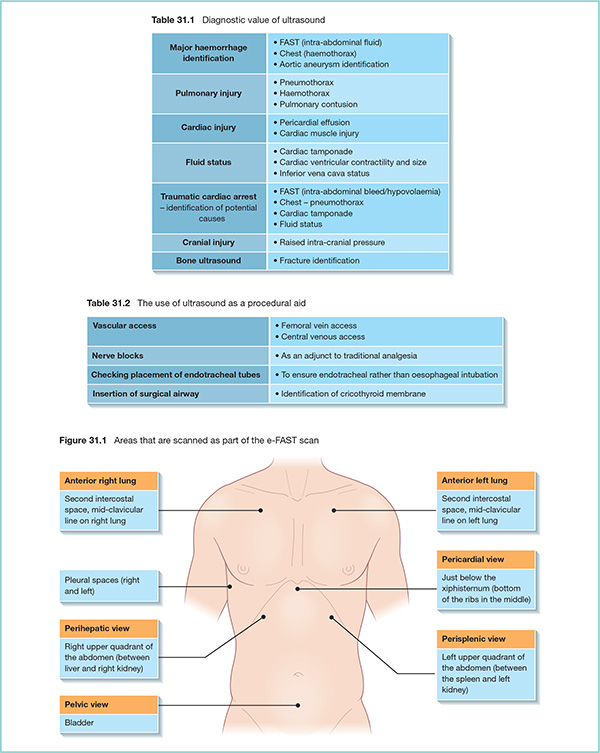31 Ultrasound has been used as a diagnostic aid in medicine for over 50 years. In the past 20 years, ultrasound has moved from being a specialist imaging technique provided by radiologists and cardiologists to a diagnostic tool used in diverse clinical arenas, including anaesthesia, intensive care, gastroenterology, chest medicine and emergency medicine. The use of ultrasound by non-radiologists is known as ‘focused ultrasound’ and is deployed to answer specific clinical questions rather than being a detailed study of a specific anatomical region. There is great potential benefit for the use of ultrasound in pre-hospital emergency medicine. The most valuable potential benefit is in making a diagnosis earlier and so facilitating timely definitive care. Ultrasound may also be used in pre-hospital procedures including gaining vascular access, nerve blocks and confirming placement of intraosseous and endotracheal tubes. The potential uses of ultrasound within the pre-hospital environment are highlighted in Tables 31.1 and 31.2. Many trauma patients have injuries that may not be apparent in the primary survey. Significant bleeding into the peritoneal, pleural or pericardial spaces may occur without obvious warning signs. In order to reduce both mortality and morbidity from trauma, it is necessary to recognise potential areas of blood loss and bleeding as early as possible in the resuscitation of patients.
Pre-hospital ultrasound

Focused assessment with sonography in trauma (FAST scan)

Full access? Get Clinical Tree








